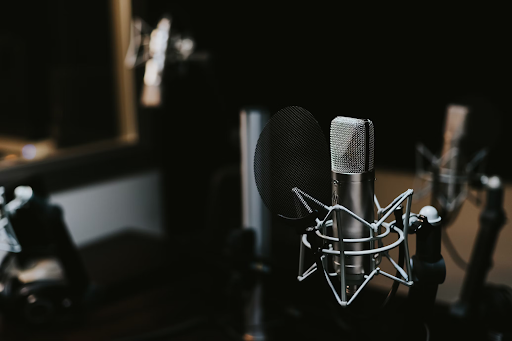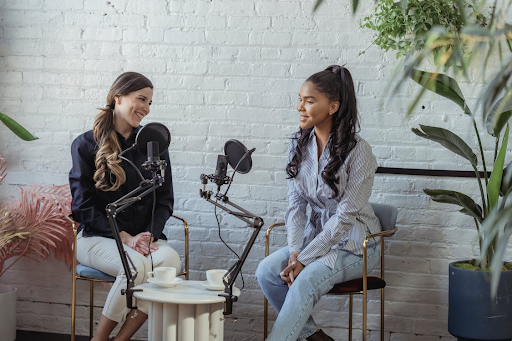6 Ways to Utilize Radio Advertising Services to Reach More People
6 Ways to Utilize Radio Advertising Services to Reach More People
The digital age has brought on a plethora of marketing opportunities that have left traditional advertising mediums on the sidelines. But there’s one resilient-forgotten hero that continues to amplify brands’ messages across the airwaves, and that’s radio advertising. Amid the cacophony of online ads, the simplicity and charm of radio ads are regaining respect, especially within local markets and various age groups.
Here, we’ll explore six potent strategies to maximize your reach and engagement through radio advertising services. Whether you’re a local business aiming for community ties or a global brand targeting specific demographics, tuning into these tactics can be your signal boost to a wider audience.

1. Leverage the Emotional Pull of Sound
Sound has a unique power to tap into our emotions. Through audio advertisements and broadcasting, brands can create soundscapes that evoke nostalgia, joy, or even a sense of urgency. Consider the iconic jingles – they stick in our heads and color our perceptions of a brand. Incorporating these elements into your radio ads can forge a strong emotional bond with listeners.
How to implement it: Craft a story that your audience can relate to, and use sound to underscore the narrative. This could be a heartwarming story about a family or a celebratory jingle that captures the essence of achievement.
2. Time Your Ads with Precision
Timing is everything, and in radio advertising, it’s no different. Knowing when your target audience is likely to tune in is crucial. Are they commuters during rush hour? Perhaps they’re tuning in during a weekend show. Understanding these habits allows you to air your advertisements at the most opportune times.
How to implement it: Work with radio stations to get statistical data on listener habits, and schedule your ads accordingly. Additionally, ensure your ads are timed in clusters to maximize the frequency effect without overspending.
3. Personalize for Regional Touch
Every region has its unique culture, slang, and sensibilities that can significantly impact the reception of your radio ads. Taking a cookie-cutter ad and broadcasting it nationwide may not yield the same results as tailoring it to resonate with the local audience.
How to implement it: Research the region you’re targeting, and incorporate local references and values into your ad. Perhaps it’s a shoutout to a local sports team or using specific vernacular that locals will respond to positively.
4. Be Interactive with Call-to-Action Shoutouts
Radio is an intimate medium where listeners often feel a personal connection to the presenters. Taking advantage of this connection, use call-to-action shoutouts in your ads to prompt immediate interaction from listeners. Whether it’s text-in responses or visiting a specific website, make it easy for them to engage with your brand.
How to implement it: Create a sense of urgency and reward for immediate action. For example, offer a limited-time discount for the first 100 listeners to visit your store or a free giveaway for text-ins during the show.
5. Lengthy Repetition for Top of Mind Recall
Radio advertising is best served with a side of repetition. Unlike visual ads, radio has the advantage of being less intrusive, allowing for longer and more frequent repetition without causing audience fatigue. This helps in cementing your brand or message in the minds of listeners.
How to implement it: Plan campaigns with multiple ads that follow a similar creative style but convey different angles of your message or branding. This way, each ad reinforces the others without being redundant.
6. Complement with Multi-Channel Approach
While radio alone can be powerful, amplifying it through multiple channels can provide a 360-degree outreach. Pairing radio ads with social media campaigns, influencer partnerships, or even podcast sponsorships can create a cohesive marketing experience that meets your audience at different touchpoints.
How to implement it: Coordinate your messaging across channels for a consistent brand story. For example, use the same hashtags on social media that you used in your radio ads to make it easier for listeners to join the online conversation sparked by your on-air campaign.

Radio advertising is not just a blast from the past; it’s a current and effective tool that, when utilized correctly, can cut through the noise and leave a lasting impact on listeners. By tuning into the emotional power of sound, timing your ads tactfully, personalizing for regional appeal, prompting interaction, repeating your message, and coordinating with other channels, you can ensure your brand reaches more ears than you thought possible.
Remember, in the battle for consumer attention, those who master the art of radio advertising are the ones who will sing their way to the top of the charts.

 in Melbourne
in Melbourne 
 Employee Screen Monitoring Software
Employee Screen Monitoring Software App and Website Monitoring Software
App and Website Monitoring Software Time and Attendance Software
Time and Attendance Software Finance
Finance Banking
Banking Healthcare
Healthcare Lawyers
Lawyers Retail & ecommerce
Retail & ecommerce Knowledge base
Knowledge base Blogs
Blogs Installation Guide
Installation Guide FAQs
FAQs About
About Media Kit
Media Kit Contact us
Contact us